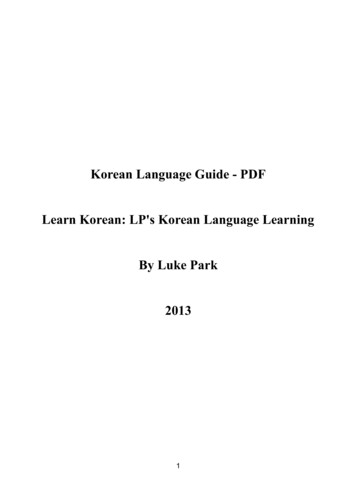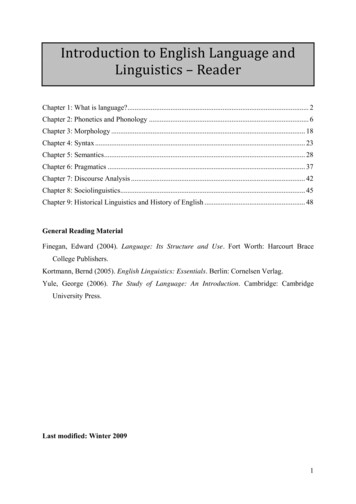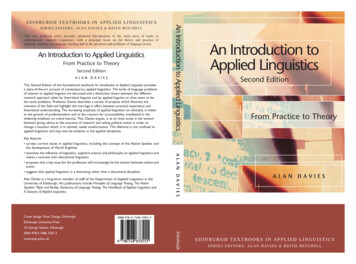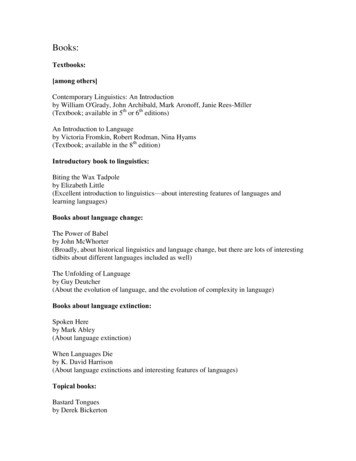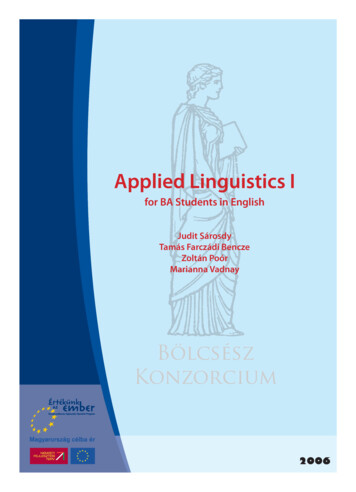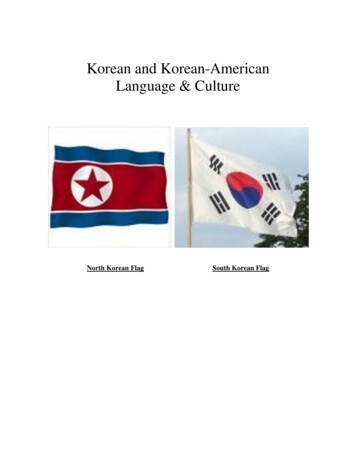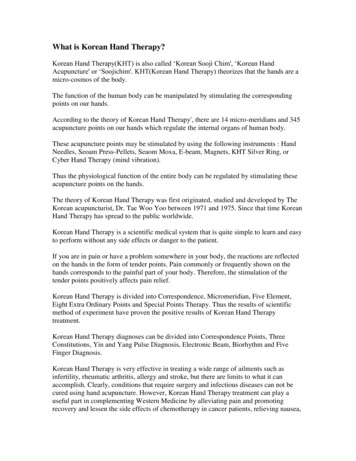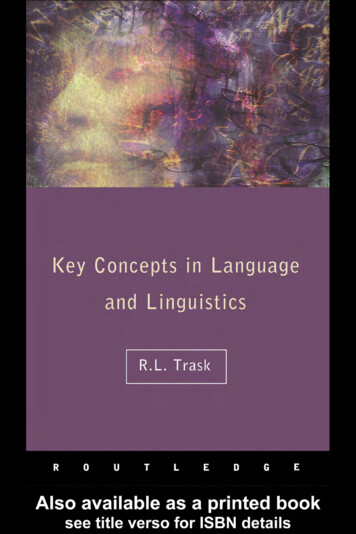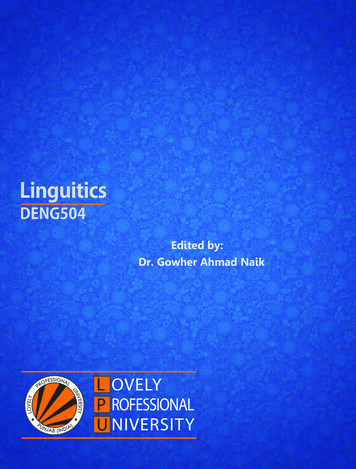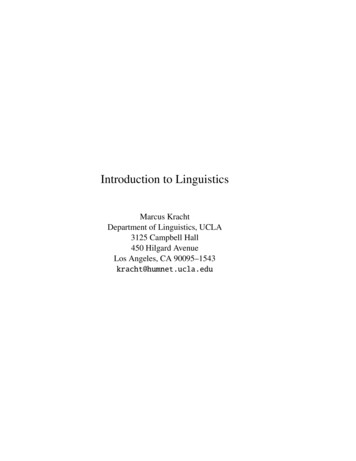
Transcription
Korean andKoreanLinguisticsSamikai Rosado
WritingSystem
History Hangul was created during theJoseon Dynasty (1393-1910) in 1446 It was created by King Sejong (세종대왕) to teach the common people toread and write They used Chinese Characters as awriting system previously Only the elite knew how to read andwrite because the masses wereilliterate
Korean AlphabetHangeul - 한글 Each charactercorresponds to a naturalsound the mouth makes Korean is written inquadrants It is composed of 19consonants and 21 vowels
Quadrants in Korean닭C VC C닭이Usually sound fromone consonantcarries over to thenext when followedby a vowel!
Phonology Consonants Korean has 19 consonantphonemes There’s basic, tense, andaspirated consonants Vowels 8 vowel phonemes with theirlong vowel variantsVowelChartLong-Vowel Chart
Grammatical Features Korean has honorifics, withseven speech levels Higher status the speakeruses special nouns or verbendings Each speech level has itsown verb ending to indicateformality This is meant to showrespect to thoselistening to the speaker 5 of these levels aregrouped into 반말(casual language) and존댓말 (formal language)하소서체 is missing because it isonly used with royalty or inreligious texts
Grammatical Features (cont.) Korean is an agglutinative language Words contain morphemes to determine their meaning Morphemes remain unchanged after coming together Korean has no grammatical gender The third-person singular pronoun has gendered forms 그 geu (male) 그녀 geunyeo (female)Caveats: Women often introduce themselves as a wife or child’s mother once they have gottenmarried or given birth Titles have gender differences 사장 sajang (company president) 여사장 yŏsajang (female company president)
Dialects
Dialect Separation There is no rule for dialect demarcation; some are named afterprovincial boundaries, others are arbitrary in nature laJejuIce cream in South Korea isliterallythesamepronunciation as in English (아이스크림)In North Korea, ice cream is’icey frosting’ (얼음 보숭이) Standard Korean or 표준어 is defined as the Seoul dialect but does notinclude all features specific to the Seoul dialect Standard South Korean and North Korean are still intelligibleCentral DialectsSouth Eastern DialectSouth Western DialectNot named after a
Difference BetweenRegional Dialects Seoul Dialect (standard Korean): 밥 먹었어? Did youeat? Busan Dialect (Gyengsang Province): 밥 뭇나? Gwangju Dialect (Jeolla Province): 아야 밥 먹었냐?The map on the rightshows the variationsbetween the word‘dragonfly’ by region
NamingConventions
Family Names There are 300 family names본관本貫 Kim, Park, and Lee are 50% of last names Each family name is divided into 1 or more clans Gimhae Kim’s are the Kim clan from the Gimhae city Last names are passed down from fathers to their children Historically, last names were given to those in a King’s court After Mongolian invasion, kings and aristocrats had Mongolian family names
Given Names Given names are typicallycomposed of hanja, orChinese characters These used to be GenerationNames; two people born in thesame generation share thesame character in their name承 Starting in the 70’s, Koreannames were based on native 鉉Korean words as opposed toChinese characters Popular given names include:Haneul (하늘; "Heaven" or "Sky")Areum (아름; "Beauty") Korean names are threesyllables; 1 for the last name, 1Iseul (이슬; "Dew")for the generational name, and 1Seulgi (슬기; "Wisdom")for the given name
Thank you forlistening!
Standard Korean or 표준어 is defined as the Seoul dialect but does not include all features specific to the Seoul dialect Standard South Korean and North Korean are still intelligible Ice cream in South Korea is l i t e r a l l y t h e s a m e pronunci

